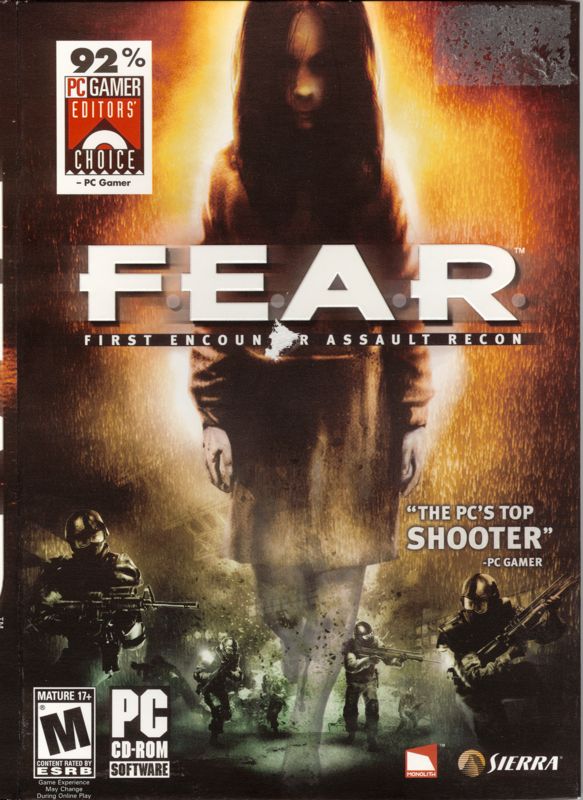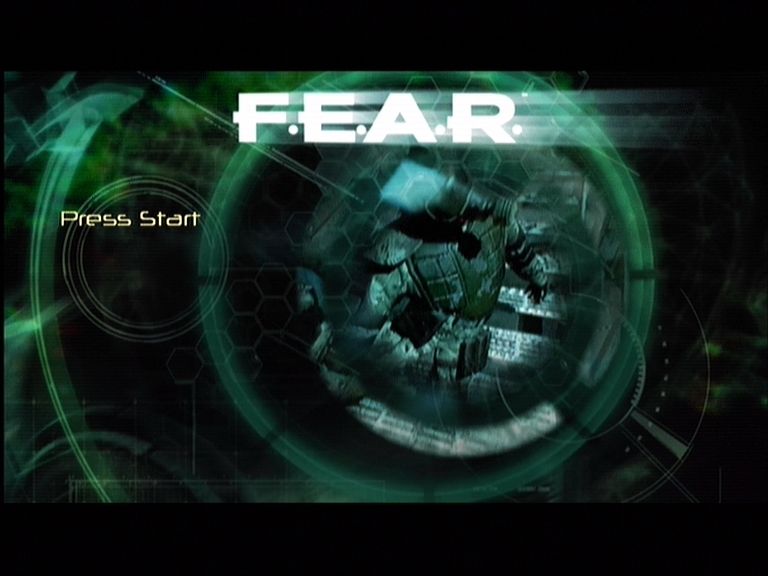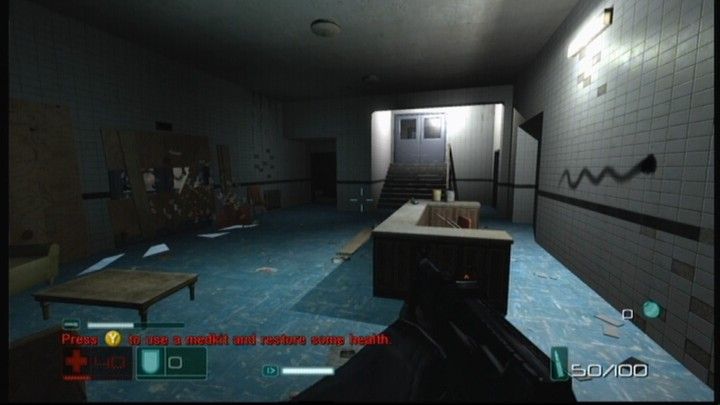Retro Replay Review
Gameplay
F.E.A.R. delivers an adrenaline-fueled first-person shooter experience that blends lightning-fast reflex demands with a creeping sense of dread. The core mechanics revolve around precise gunplay, with each weapon—from standard pistols to futuristic rifles—feeling weighty and satisfying. Reload animations are crisp, recoil is tangible, and the intuitive cover system encourages strategic movement through the game’s corridors and offices.
A standout feature is the “bullet-time” ability, which slows down the world around you as every shell casing floats lazily to the ground. This mechanic is bound to a resource meter, forcing players to choose critical moments to activate it. When engaged, enemies become easy targets, but the tension of deciding when to slow time adds a tactical layer: do you use it immediately in a tight spot, or save it for a tougher encounter ahead?
Enemy AI in F.E.A.R. is notoriously aggressive and unpredictable. Cloned soldiers will flank, suppress, and sometimes even leap through windows to close the distance. Their coordinated tactics make firefights memorable rather than repetitive. You can’t simply run-and-gun; you must read enemy patterns, use cover effectively, and manage limited ammunition, or risk being overwhelmed.
Aside from standard firefights, the game features environmental challenges like collapsing corridors, electrified floors, and claustrophobic ventilation shafts. Each set piece is designed to heighten suspense, forcing you to balance between fear and focus. Whether you’re dispatching a squad of cloned commandos or inching through a darkened corridor to catch a glimpse of the spectral girl, the gameplay loop keeps you on edge from start to finish.
Graphics
Upon its release, F.E.A.R.’s graphics engine was heralded for its advanced lighting and particle effects. The interplay of dynamic shadows and volumetric light beams creates environments that feel both realistic and foreboding. When lights flicker or electrical sparks cascade across a corridor, the attention to detail reinforces the game’s horror credentials.
Character models are sharp and expressive, particularly the cloned soldiers whose metallic armor plates and visored helmets catch the light in convincing ways. Textures—from scuffed floors to oxidized metal walls—contribute to the lived-in feel of the aerospace facility. Occasional screen dirt, glare, and bloom further immerse you in the game world, as if you’re physically peering through a visor.
The spectral girl, Alma, is the graphical centerpiece of F.E.A.R.’s horror design. She materializes as a pale, flickering apparition, her hair and dress moving with uncanny realism. Even in brief glimpses, her unsettling stare lingers in your mind. The engine’s particle effects, such as flashes of static or glowing embers, accentuate her supernatural presence.
Visual effects during bullet-time are equally impressive: debris floats, muzzle flashes stretch into long streaks, and shell casings hang in midair. Paired with the game’s rich color palette—muted grays punctuated by harsh reds—the result is a cinematic shooter that still holds up, offering an atmosphere that’s as chilling as it is action-packed.
Story
The narrative of F.E.A.R. intertwines military conspiracy with supernatural terror. You assume the role of a newly recruited operative in a clandestine strike force tasked with investigating an aerospace installation overtaken by cloned soldiers. As you push deeper into the complex, it becomes clear that the clones are merely pawns in a much darker game.
Guidance comes through radio chatter, briefings, and fragmented video logs scattered throughout the levels. Rather than spoon-feed exposition, F.E.A.R. encourages you to piece together the backstory—how elite commandos went rogue, and the true nature of the ghostly girl known only as Alma. This fractured narrative style amplifies mystery and keeps you hunting for clues even amid intense firefights.
Alma herself is the perfect horror catalyst: her appearances are unpredictable, often presaging an ambush or a supernatural event. The way she can manifest in walls, reflections, or the edge of your vision elevates every hallway into a psychological gauntlet. The tension between the military action and these ghostly interludes creates a unique tone that few shooters achieve.
While the campaign spans a relatively concise 10–12 hours, the pacing is well calibrated. High-octane firefights alternate with atmospheric exploration, giving you moments to breathe before the next shock. The ending ties up the primary mystery but leaves certain questions open, inviting replay or further exploration in the game’s expansions.
Overall Experience
F.E.A.R.: First Encounter Assault Recon stands out as a masterful blend of intense FPS action and psychological horror. Its seamless integration of bullet-time, sophisticated enemy AI, and haunting supernatural elements keeps the experience both thrilling and unpredictable. Whether you’re a fan of methodical shooters or horror narratives, F.E.A.R. offers a compelling package.
Performance-wise, the game runs smoothly on a wide range of hardware, scaling nicely from medium rigs to high-end setups. The audio design deserves special mention: every gunshot crackles with authority, distant screams echo menacingly, and the ambient soundtrack ratchets up the suspense without overshadowing sound effects.
One potential downside is the limited number of enemy types; after extended play, encounters can feel somewhat repetitive. However, the narrative device of Alma’s appearances, along with environment-based scares, effectively reinvigorates the experience. Multiplayer and expansion packs (like Extraction Point and Perseus Mandate) also add replay value for those seeking more.
In conclusion, F.E.A.R. remains a benchmark for atmospheric shooters. Its marriage of tight, responsive controls, high production values, and a chilling narrative ensures that it still ranks among the genre’s best. For buyers seeking a game that combines pulse-pounding action with genuine scares, F.E.A.R. is hard to beat.
 Retro Replay Retro Replay gaming reviews, news, emulation, geek stuff and more!
Retro Replay Retro Replay gaming reviews, news, emulation, geek stuff and more!









Reviews
There are no reviews yet.